Today’s blog post is a guest article by The Freelance History Writer Susan Abernethy. Check out Susan’s blog: http://thefreelancehistorywriter.com/ Also check out Susan’s Facebook Pages: https://www.facebook.com/MedievalHistoryLovers and https://www.facebook.com/thefreelancehistorywriter
I’ve been doing quite a lot of research on the Anglo-Saxon period of British history which roughly spans the time from the exodus of the Romans to the Norman Conquest. For the most part, the chroniclers of this era tell us about the men who ruled and fought. But occasionally, a woman comes to light in the records. Some of these women had a distinct impact on history.
Britain under the Anglo-Saxons was divided into various kingdoms. In the north there was Northumbria and the Danelaw. In the midsection was a kingdom called Mercia. Further south, in the east was Anglia, Essex and Kent and in the west there was Sussex and Wessex. Each of these kingdoms had their own kings.
In the mid-eighth century there was a powerful and ambitious king of Mercia named Offa. In 757 he was in the midst of an intense power struggle to take over the kingdoms surrounding Mercia. He also wanted to have a court with decorum and to demonstrate Christian values, seeing himself as an equal to his contemporary, Charlemagne, King of the Franks. Offa married a woman named Cynethryth who was either of Anglo-Saxon descent, possibly from the seventh century King Penda of Mercia, or of Frankish origin. In order to guarantee his dynasty would last, he designated her as his queen and raised her in importance in the kingdom. He allowed Cynethryth to witness charters after the birth of her son and she is named “queen of the Mercians” in these documents. Even more importantly, Offa had coins struck with her name. She is one of the few women to have coins with her name in the medieval west. A cleric writing about her at the time describes her as the “mistress of the royal household” and calls her pious. Clearly this was an influential and authoritative couple who did everything in their power to position themselves over their rivals in the surrounding kingdoms.
Cynethryth had a daughter named Eadburh who had quite a different reputation from her mother. Whether she deserved it or not, she is infamous for being an evil queen. She may have been an ardent student of her father’s politics or her reputation for wickedness may have been part of a smear campaign by later chroniclers. Offa arranged for Eadburh to marry King Beorhtric of Wessex in 789 in a mutually beneficial political alliance for both kings.
The story of Eadburh was told by King Alfred the Great to his biographer Bishop Asser. After Eadburh’s marriage she quickly dominated Beorhtric. Eadburh was active in politics and asserted her own rights with some people calling her a tyrant. Beorhtric was still king but all charters were issued in King Offa’s name so Eadburh may have been safeguarding her father’s interests. She began to loathe any men that Beorhtric liked or trusted. If she couldn’t get her way with the king, she resorted to poisoning the food or drink of the hated councilors and others. Finally there was a young man who became a favorite of Beorhtric. Eadburh denounced the young man but the king would not give in to her. She decided to poison the favorite but Beorhtric took the poison by mistake. Both the king and favorite died at Wareham in 802.
Eadburh couldn’t return to Mercia because her father and brother were dead. She packed up many treasures and fled to France and Charlemagne gave her a convent of nuns to rule. But she lived as recklessly in France as she did in Wessex. She was caught in a compromising position with an Anglo-Saxon man and was ejected from the nunnery. She lived out the rest of her days in poverty in Italy, dying. Asser tells us because of lingering resentment for Eadburh, the status and influence of king’s wives in Wessex was greatly reduced to the point where they were not called queen but only “king’s wife” or “Lady”. This argument seems to have merit because Alfred the Great’s mother and wife were not called queen.
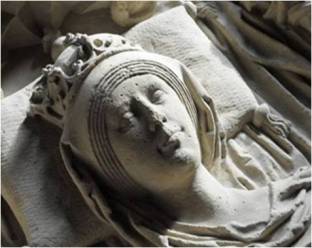 Eadburh – Saxon Serial Killer?
Eadburh – Saxon Serial Killer?
King Alfred’s mother was a woman named Osburh. What little we know about her is from Alfred’s biographer. Osburh was the daughter of Oslac who was the butler to King Aethelwulf of Wessex. Asser tells us Osburh was a most religious woman, noble in birth and noble in character. There is a delightful story Alfred tells Asser of his mother reading a book of English poetry to him and his siblings. Alfred was fascinated by the illuminated capital initial on the first page of the book. Osburh told the children the first one who could come to her and recite the poetry in the book would be given the book. Alfred eagerly took the volume and memorized the poetry. Osburh gave him the book as his reward. After this incident, Osburh disappears from the record.
Osburh reading to her son Alfred
Alfred the Great was married to a Mercian princess named Ealhswith as part of a political alliance between Mercia and Wessex. There is a famous story told about the wedding by Asser. After the wedding ceremony, there was feasting and gift-giving which lasted late into the night. The festivities were interrupted when Alfred fell ill. We don’t really know what the illness was but he seemed to suffer from some intestinal disorder. It was the beginning of an affliction that would last for the rest of his life.
Alfred and Ealhswith had five children who survived infancy. After Alfred became king he had to fight the Vikings. He did this effectively and there was a period of relative peace. During this time Ealhswith turned her attention to the establishment of the Nunnaminster (St. Mary’s Abbey) at Winchester, a project she was unable to finish due to her death. Alfred died in 899 and Ealhswith survived him by three years.
Alfred the Great’s wife Ealhswith
One of my favorite Anglo-Saxon queens is Alfred and Ealhswith’s daughter Aethelflaed. She was married to Ealdorman Aethelred of Mercia in 884 in a political alliance. She had been educated at her father’s court and learned many of his tactics for fighting the Vikings. She ruled Mercia as a partner with her husband and when he died after a long illness in 910, she governed Mercia solely on her own. She was a powerful leader. She actually led her troops into battle against the Vikings and was victorious. After a great victory at Derby in 918, other Viking strongholds were willing to surrender to her. But she died suddenly in June of that year at Tamworth. It’s hard not to be tempted into wondering what great things she could have done had she lived.
Alfred the Great’s daughter Aethelflaed
After Aethelflaed, we have the influential Queen Eadgifu who was the third wife of Aethelflaed’s brother Edward the Elder. When Edward the Elder died, leaving Eadgifu with two young sons, she served in the capacity of regent. There is evidence she witnessed many charters during the reigns of her sons, usually right after the king. She possessed many landed interests and was influential for most of the forty years she survived after the death of her husband.
Picture of Queen Eadgifu from The Saxon
Cathedral at Canterbury
Eadgifu’s grandson Edgar the Peaceable married the beautiful Aelfthryth, the daughter of an ealdorman. She was the first woman to be crowned Queen in England and is best known for her possible involvement in the murder of her stepson King Edward who became known as “the Martyr”. He was stabbed to death in the courtyard of Corfe Castle upon arriving for a visit with Aelfthryth and her own son Aethelred. This was scandalous at the time. She may have conspired in the murder so Aethelred could become king.
Aelfthryth
Aethelred married one of the most prominent queens of Anglo-Saxon England, Emma of Normandy. Aethelred married Emma, the sister of Richard, Duke of Normandy in a political alliance. Together they had a son named Edward. When Aethelred died, Emma managed to marry his successor, the Danish King Cnut and together they had a son named Harthacnut. When Cnut died, Emma promoted her son Harthacnut to be king over her elder son Edward. This caused a great deal of friction between mother and son. After a period of unrest, Emma’s son Edward became king and would be known as Edward the Confessor.
Queen Emma of Normandy
Edward the Confessor was married to Edith of Wessex, the daughter of Earl Godwin, Edward’s adversary. Edith was exceedingly well educated and pious. She acted as an advisor to Edward and was known for her good manners and charitable works. For whatever reason, Edith and Edward had no children which would have a colossal impact on the course of English history. When Edward died in late 1065, Edith’s brother Harold became King of England. William, Duke of Normandy, came to England in October of 1066 and defeated Harold at the Battle of Hastings, taking the throne of England by conquest. Edith paid tribute to William and allied herself with him. In return, William allowed her to keep her landed interests and income. She commissioned a biography of her husband and lived until 1075.
Edward the Confessor’s Bride Edith
So, as we have seen with this cavalcade of Anglo-Saxon queens, there were some very powerful women in the Anglo-Saxon era. They each had their impact on history and left interesting legacies, whether it was through their children, fighting Vikings, murder, poisoning or commissioning biographies. If you’d like to read more about Anglo-Saxon history and these Queens, please visit my website The Freelance History Writer.
Further reading: “The Anglo-Saxon World” by Nicholas J. Higham and Martin J. Ryan, “The Kings and Queens of Anglo-Saxon England” by Timothy Venning, “Queens, Concubines and Dowagers: The King’s Wife in the Early Middle Ages” by Pauline Stafford, “The Blackwell Encyclopaedia of Anglo-Saxon England” edited by Michael Lapidge, John Blair, Simon Keynes and Donald Scragg, “Alfred the Great: Asser’s Life of King Alfred and Other Contemporary Sources” edited by Simon Keynes and Michael Lapidge, “Queen Emma & Queen Edith: Queenship and Women’s Power in Eleventh-Century England” by Pauline Stafford

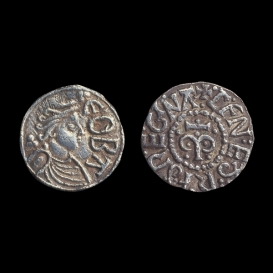
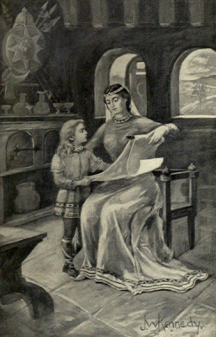
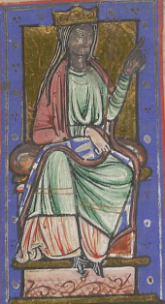
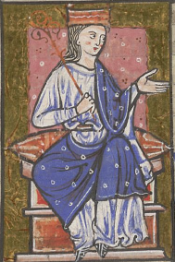
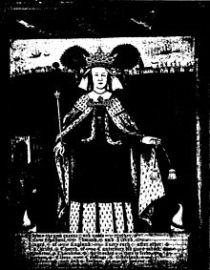
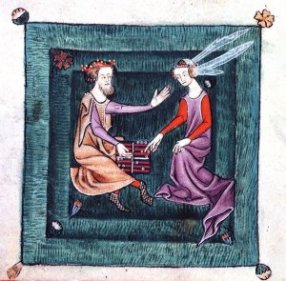
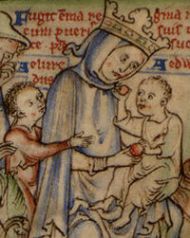
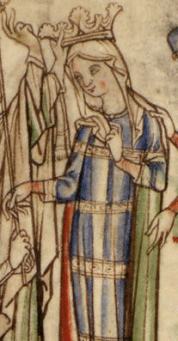


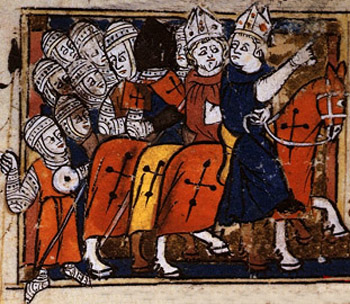





Reblogged this on The Freelance History Writer and commented:
Here’s an article I wrote for Medieval Girl’s blog on a variety of Anglo-Saxon Queens. There’s some very interesting characters here. Enjoy!
Ok thank you 😀
Fantastic, I greatly appreciated it. Many thanks.
Reblogged this on Ruth Stacey poet.
A really interesting article.
Reblogged this on brigantian and commented:
Interesting read
Reblogged this on Angelfolc and commented:
Interesting read